Note: This station was built to cater for the increased traffic that developed after the electrification of the line in 1904. Commuters were choosing to live in the town, and many day-trippers travelled from Newcastle, especially at weekends in summer, to enjoy the excellent beach. Whitley Bay was also growing in popularity as a residential resort, particularly with Glaswegians.
1.gif) |
In 1910 Whitley Bay not only received its grand new station, but also the Spanish City funfair. This leisure facility close to the beach (whose closest station is actually Monkseaton) has as its centrepiece a lengthy renaissance-style building and a huge dome, all painted white. Blackpool Pleasure Beach is said to have been its inspiration (though not architecturally); an interesting |
parallel is that Whitley Bay has been compared to Blackpool as an unashamedly popular resort, with Tynemouth considered a little more genteel, like Blackpool’s neighbouring Lytham and St Annes. In 1911 Whitley Bay station issued 509,974 tickets; since many users of the station would have booked their return tickets at their home station, the volume of passenger traffic can be appreciated.
The new NER facility (Whitley Bay 2nd) replaced the 1882 station, opened as Whitley and renamed Whitley Bay in 1899. Both the old station and its successor were designed by the long-serving NER company architect, William Bell. The new platforms were built on double track deviated a short distance south of the old ones, whilst the new one stood on the site of the earlier platforms and tracks. As the new station took shape the old one was progressively dismantled, its site disappearing under the main building of the lavish new structure that was completed in 1912.
| At the new station a massive red brick clock tower greeted the passengers who approached via the Esplanade and Station Road. The tower soared above a gabled porch and was decorated with string-courses in lighter coloured brick, terra cotta swag, and a lead ogee-shaped top. Two further gabled porches flanked the clock tower; like the central gable terra cotta was |
 |
used for quoins and decoration over the arches. Until the mid 1970s small glazed verandahs stretched between the flanking porches and the clock tower.
The booking hall was also given special treatment. Fawcett notes that ‘a form of banded rustication [with] alternating terra cotta voussoirs and brick in door and window arches [was] seen to full effect in the booking hall, with three booking windows set into a blind arcade borne on squat, pot-bellied Ionic columns’. He adds that the detailing of the composition is jolly, yet refined and handled with scrupulous care.
3.gif) |
Facing the platform, Fawcett refers to the emphasis of the booking hall entrance and windows, with other openings following a disciplined pattern of wide, shallow segmental arches above a tripartite division, typically into a door flanked by a pair of windows. Bold keystones embellish the arches, with neat, segmental wooden pediments crowning the doorways |
beneath. A range of passenger facilities was provided in the main building, including general waiting rooms, separate ones for first and second class lady passengers, toilets (with a booth for an attendant in the gents’ toilet), and a parcels and left luggage office. At the western end, adjacent to the lift and pair of footbridges was a meat, fruit and vegetable store. On the south platform a much smaller range of buildings included toilets and a waiting room.
The platforms were very wide, allowing much space for queueing and circulating passengers, and a sturdy cast iron barrier along the platform allowed access to and from the platform to be controlled for ticket checks.
| Inside the station the two platforms were covered by a glazed ridge-and-furrow trainshed, which did not need to be high above the platforms to allow for steam and smoke since electric trains provided the regular service. The glass was removed from above the tracks in later years. Fawcett comments on the light and airy impression of the station, partly owing to the extensive |
 |
use of glass in the roofing; but he also identifies a contrast with Bell’s thirty years’ older station at Tynemouth. ‘Instead of the beefy Gothic [columns] of Tynemouth, with their strongly detailed, swelling-out bases’, he adds, at Whitley Bay ‘these are slim neo-classical ones, with neat Ionic capitals’.
 |
Latticework footbridges connected the platforms. The central one was for passengers. Whitley Bay handled plenty of parcels traffic, for which lifts were provided, with timber-clad towers at the western end of the station, and a parcels bridge; a second passenger bridge was tacked on to this. This passenger bridge had covered stairway access from the station forecourt |
and - facing west - from the south platform. To make space for these parcels facilities the westernmost roof bay was larger than the others.
A signal box stood on the north platform, east of the station buildings. No goods sidings were provided at the station; nearby Monkseaton dealt with such traffic.
The Coast Circle route from Newcastle Central to Jesmond, with Manors (North) replacing New Bridge Street, was opened on 1 January 1909, but until 1917 the new link was used only by Newcastle Central – Benton trains. The summer 1920 timetable shows trains every half hour throughout the day on weekdays, with a more intensive rush hour service, and an hourly service on Sundays. Express services, some of them routed via the East Coast main line between Heaton and Backworth, called at Whitley Bay. By the late-1930s the half-hourly service had increased in frequency to 20-minute intervals on weekdays and half-hourly on Sundays. On summer Sundays in the mid 1950s the same frequency was provided, sometimes with ‘extras’ at particularly busy times; there were hourly Sunday trains in the winter.
 |
| In the LNER era ‘mint imperial’ style electric lamps were installed, carried on swan-neck standards or suspended beneath the platform awnings. The company’s policy was to provide small nameplates to accompany the electric lamps, which they did at Whitley Bay. The LNER also fitted running-in boards of a style believed to be unique to the ‘Coast Circle’ |
 |
incorporating the company’s early diamond logo. In January 1948 the station became part of the nationalised British Railways North Eastern Region, then in January 1967, when the North Eastern Region was abolished it was transferred to the Eastern Region. The LNER nameboards were in place well into the British Railways era, being replaced with tangerine vitreous enamel boards in about 1960. LNER nameplates were retained until 1971; totem signs were never fitted.
Until the late 1960s the north end of the station was kept immaculate, with a colourful, well tended garden, presumably because most of the holidaymakers arrived from this direction. The other end of the station, which also had the signal box on the Tynemouth-bound platform was not so well maintained.
 |
The familiar 1937 electric multiple units on the Coast Circle were eventually condemned as ‘life expired’ by British Rail, and phased out over a two-year period to be replaced with diesel multiple units; the final EMU ran on 17 June 1967. The diesel units provided a slower service, and the longstanding 20-minute frequency of trains was reduced to half-hourly |
intervals; however an express service each hour called at Whitley Bay. The new Tynerider branded services – the same old DMUs with jolly orange transfers added to them! – were introduced in October 1970, restoring the 20-minute interval service. By this time the formerly dignified station began to look a little neglected. In 1971 the inadequate LNER lighting was removed and tall, vandal-proof standards were installed. In 1973 black-and-white ‘corporate identity’ signage was added, and soon afterwards the tangerine running-in boards were removed.
Royal Assent was granted in 1973 for conversion of the route to light rail ‘Metro’ operation, and the DMU service continued as before, until the direct trains between Newcastle Central and West Monkseaton were withdrawn on 23 January 1978 for Metro engineering work to take place. Newcastle could still be reached by train using the route via Tynemouth, but these trains ceased on 10 September 1979. Less than a year later, on 11 August 1980 the station reopened on the first phase of the Tyne & Wear Metro, with trains to Tynemouth and the new Haymarket station in central Newcastle.
| The conversion of Whitley Bay station for Metro use was sensitively handled and involved little demolition. The major alteration was the shortening of the glazed trainshed with the removal of three bays at either end, but most of it remains intact. Unfortunately the central footbridge now has unattractive panelled sides, and a most unappealing second footbridge spoils the northern |
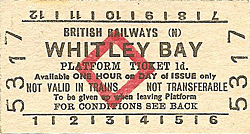 |
end of the station. The entrance hall has been decorated with mosaics of beach scenes in place of the ticket windows. Overall Whitley Bay remains a well-maintained and attractive station, worthy of its Grade II Listed status.
BRIEF HISTORY OF BLYTH & TYNE RAILWAY (Hartley-Monkseaton ‘Avenue Branch’; Monkseaton / Whitley Bay / Tynemouth area)
The southern end of the Blyth & Tyne Railway has a complicated history. Until 1861 there was a single route south from Blyth and Seghill through Prospect Hill to Percy Main, with a terminus adjacent to the NER station. However that year a new branch was opened, following the route of the former Whitley Waggonway, extending from Hartley to Tynemouth. It should be noted that this included the stretch to what is now Monkseaton, which was to be known as the ‘Avenue Branch’, and that the line beyond to Tynemouth was half a mile inland of the present day Monkseaton – Tynemouth Metro line.
At the Tynemouth end the original terminus was quickly replaced with a new one on a short branch which curved south-eastwards, and that in turn closed when its branch was extended to a third terminus, which adjoined the 1847 Tynemouth terminus of what had been the Newcastle & North Shields Railway. These developments are shown on the series of accompanying maps.
12.gif) |
In 1864 the Blyth & Tyne reached Newcastle, with its terminus at New Bridge Street. This was achieved by diverting trains onto a new line just south of Holywell, through Backworth, Benton, and Jesmond. From Backworth a new line was opened to join the 1861 Whitley (Monkseaton) to Tynemouth route. Trains could now travel on the B&T from Newcastle (New |
Bridge Street) to Tynemouth, making the Holywell – Prospect Hill – Percy Main route, and the Avenue Branch between Hartley and Whitley (Monkseaton) redundant. These two lines closed in June 1864 on the day when the Newcastle – Tynemouth service was inaugurated. In June 1904 the Avenue Branch reopened to passenger traffic.
| In 1874 the B&T was absorbed by the NER, and the opportunity was taken to reorganise the railway routes in the Monkseaton / Whitley / Tynemouth area. With the growth of housing and holidaymaking on the coast the ‘inland’ route from Monkseaton to North Shields was superseded in 1882 by one within sight of the sea, and the two formerly competing termini at Tynemouth |
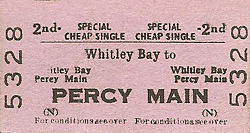 |
were replaced with a splendid new through station. This created the coastal section of the familiar Coast Circle and Metro route, although there were to be realignments at Whitley Bay in 1910 and Monkseaton in 1915 where new, larger stations were built.
Click here for a list of sources and a Blyth & Tyne bibliography
Tickets from Michael Stewart except 0388, 025 & 1589 JC Dean. 1906 Bradshaw from Chris Hind, 1922 Bradshaw from Chris Totty. Route map drawn by Alan Young.
To see other stations on the Blyth & Tyne Railway Avenue branch click on the station name: The Avenue, Dairy House, Monkseaton (1st site), Whitley, Cullercoats (1st site), Tynemouth (1st site), North Shields (B & T) & Tynemouth (3rd site)
See also Seaton Sluice and the unopened Collywell Bay branch: Brierdene & Collywell Bay
See also
West Monkseaton, Monkseaton (2nd site), Whitley Bay (1st site), Cullercoats (2nd site) & Tynemouth (4th site)
See also
Tynemouth (Newcastle & Berwick terminus) |

bay_old26.jpg)

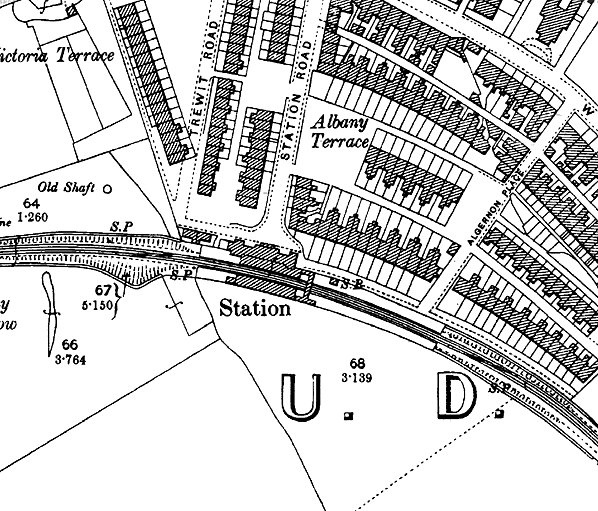
bay_old27.jpg)
bay_old22.jpg)
bay_old24.jpg)
bay_old20.jpg)
bay13.jpg)
bay10.jpg)
bay2_1.jpg)
bay2_2.jpg)
bay2_4.jpg)

1.gif)

3.gif)
.gif)






.gif)
12.gif)

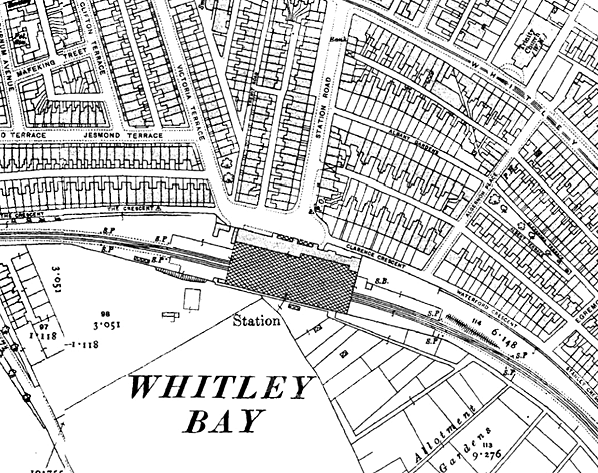
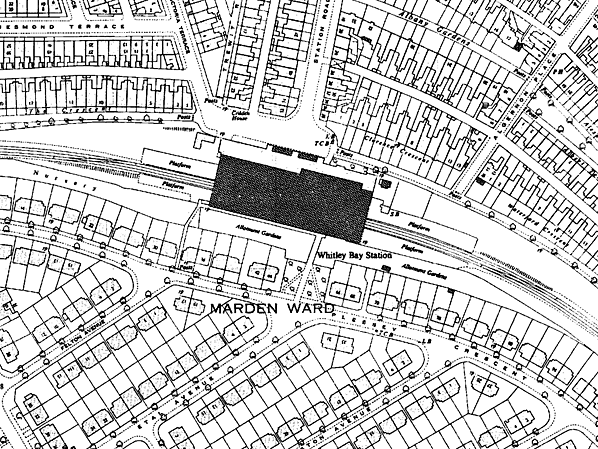
bay_old1.jpg)

 Home Page
Home Page